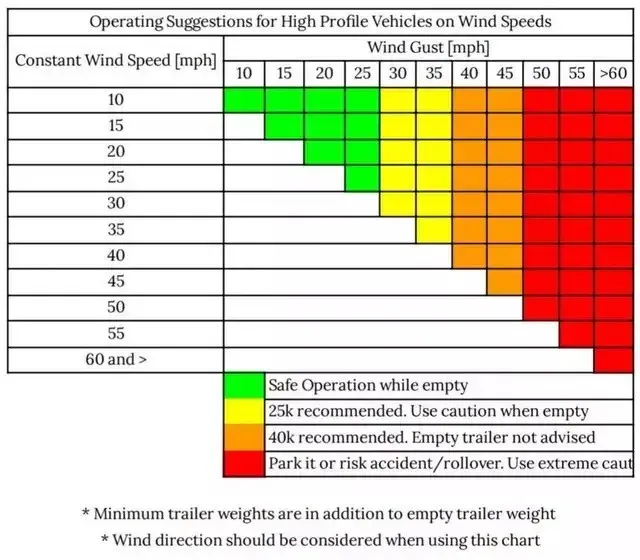Driving under high winds can be dangerous, especially for truck drivers. While most people think that snow and ice are the most dangerous weather conditions, driving a semi-truck in heavy wind can be just as hazardous. It’s essential to take safety precautions while driving during these conditions.
Truckers play a vital role in keeping our economy moving, but driving a large commercial truck comes with unique challenges and responsibilities, particularly during hazardous weather conditions. According to the U.S. Department of Transportation, weather-related accidents account for around 21% of all auto accidents nationwide, leading to nearly 5,400 deaths and 418,000 injuries each year. Of these fatalities, 82% were not occupants of the truck. It’s clear that all drivers, including truckers, have a duty to take extra precautions to protect themselves and others on the road. By following these high wind driving safety tips, truckers can help ensure everyone arrives at their destination safely:
- Plan Ahead:
Leave extra time, as your drive may take longer due to the need to drive more slowly in high winds. - Always Wear a Seatbelt:
Wearing a seatbelt can save your life in the event of an accident. - Slow Down:
Slow your speed to a safe driving speed and turn on headlights if needed to account for potentially lower visibility created by blowing dust, sand, snow or rain. - Keep Your Hands Firmly on the Wheel:
Wind can suddenly move your car when traveling from a protected to unprotected area, so keep your hands on the wheel at all times. - Maintain a Safe Distance:
Be aware of and maintain safe distances from other vehicles near you, particularly RVs, campers, trucks, buses, or trailers being towed. These vehicles could swing out and hit your car in sudden wind gusts. - Take Extra Care in a High-Profile Vehicle:
If you’re driving a high-profile vehicle such as trucks, vans, SUVs, or towing a trailer, take extra precautions, as these are more prone to being pushed or flipped by high winds. - Watch for Objects That Could Blow into the Roadway:
Tree limbs may break and/or other debris may come loose during strong winds. - Listen to the Radio:
Listen to the radio for changes in weather conditions that could create more dangerous driving. - Pull Over if Necessary:
If winds are severe enough to prevent safe driving, pull over into a safe parking area away from trees, power lines, or other tall objects that could fall onto your vehicle. - Avoid Downed Power Lines:
Never drive over downed power lines. Avoid anything that may be touching downed lines, including vehicles or tree branches. Report downed lines to your local utility emergency center and to the police. - Use Lower Gears and Hazard Lights:
When driving in high winds, using lower gears can help increase engine revolutions, providing more power to help you maintain control in strong wind gusts. Additionally, turning on your hazard lights can help alert other drivers on the road that you are experiencing hazardous driving conditions due to the wind. Remember to turn off your hazard lights when conditions improve. - Ensure Secure Doors and Cargo:
It’s crucial to ensure that all truck doors are tightly locked and your cargo is properly secured to prevent any incidents caused by heavy winds. The wind can make doors fly open or cargo to shift, leading to accidents or road obstructions if not secured properly. While it’s always essential to secure doors and load before every trip, it becomes even more critical when high winds are in the forecast.
Per below table shared on Reddit, there are recommendations for high-profile vehicles based on wind speeds. These suggestions can serve as a valuable reference for truckers and other high profile vehicle drivers who may encounter high winds on the road

